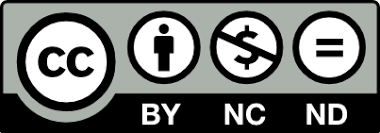HUMOUR AND EMOTIONAL SETTING IN PUBLIC SPEAKING
Keywords:
framing; emotion; humourAbstract
Studying emotion is not an easy task due to a great number of controversial theories and hypotheses about the issue. For instance, James-Lange theory discusses emotion as a result of arousal and a physiological reaction on certain events; (James 1884); Cannon-Bard theory, (Cannon, W. 1987) on the other hand, suggests that emotions are physiological reactions and that emotion and arousal occur simultaneously. Appraisal theories (Moors et al. 2013; Scherer 2009) state that appraisals of situations cause emotional reactions. Other researchers debate on the universality of emotion words and argue about basic emotion terms. (Izard 2007; Wierzbicka, 1986) This article, however, focuses on humorous elements that speakers utilise to create a certain emotional background in the audience. For this, the data from 5 public speeches taken from Ted.com platform are analysed. In addition, the usage of humour and its role in creating an overall emotional background is also discussed. As an analytical framework, the article employs the framing theory (Minsky 1974; Fillmore 1976) and identifies humour in the clash of non-related frames. Current analysis suggests that speakers use non-related frames to change the meaning of the utterance and therefore result in a humourous effect that in a broader context creates an emotional setting.
Full Text (PDF)
References
Beeman, W. (1999). Humour. Journal of Linguistic Anthropology, 9(1/2), 103-106. Retrieved from http://www.jstor.org.lez.tsu.edu.ge:2048/stable/43102438
Besnier, N. (1990). Language and Affect. Annual Review of Anthropology, 19, 419-451. Retrieved from http://www.jstor.org.lez.tsu.edu.ge:2048/stable/2155972
Cannon, W. (1987). The James-Lange Theory of Emotions: A Critical Examination and an Alternative Theory. The American Journal of Psychology, 100(3/4), 567-586. doi:10.2307/1422695
Cannon-Bard theory. (n.d.) Wikipedia.org. (2014). Retrieved June 19 2019 from https://encyclopedia.thefreedictionary.com/Cannon-Bard+theory
Entman, R. M. (1993), “Framing: Toward Clarification of a Fractured Paradigm.” Journal of Communication, 43: 51–58. doi:10.1111/j.1460-2466.1993.tb01304.x
Fillmore, C. J. (October 01, 1976). FRAME SEMANTICS AND THE NATURE OF LANGUAGE. Annals of the New York Academy of Sciences, 280, 20-32.
Izard, C. (1992). Basic emotions, relations among emotions, and emotion-cognition relations. Psychological Review, 99(3), 561-565. http://dx.doi.org/10.1037/0033-295X.99.3.561
Izard, C. (2007). Basic Emotions, Natural Kinds, Emotion Schemas, and a New Paradigm. Perspectives on Psychological Science, 2(3), 260-280. Retrieved from http://www.jstor.org/stable/40212206
James, W. (1884). What is an Emotion? Mind, 9(34), 188-205. Retrieved from http://www.jstor.org/stable/2246769
James-Lange theory of emotion. (n.d.) Collins English Dictionary – Complete and Unabridged, 12th Edition 2014. (1991, 1994, 1998, 2000, 2003, 2006, 2007, 2009, 2011, 2014). Retrieved June 19 2019 from https://www.thefreedictionary.com/James-Lange+theory+of+emotion
Lakoff, G., & Johnson, M. (1980). Metaphors we live by. Chicago: University of Chicago Press.
Loseke, D. (2009). Examining Emotion as Discourse: Emotion Codes and Presidential Speeches Justifying War. The Sociological Quarterly, 50(3), 497-524. Retrieved from http://www.jstor.org.lez.tsu.edu.ge:2048/stable/40220142
Minsky. M (1974) A Framework for Representing Knowledge: MIT-AI Laboratory Memo 306, June, 1974. Reprinted in The Psychology of Computer Vision, P. Winston (Ed.), McGraw-Hill, 1975. Shorter versions in J. Haugeland, Ed., Mind Design, MIT Press, 1981, and in Cognitive Science, Collins, Allan and Edward E. Smith (eds.) Morgan-Kaufmann, 1992 ISBN 55860-013-2]
Moors, A. et al.(2013). Appraisal Theories of Emotion: State of the Art and Future Development. Emotion Review, 2013, vol. 5, no. 2, p. 119-124
P. N. Johnson-laird & Keith Oatley (1989) The language of emotions: An analysis of a semantic field, Cognition and Emotion, 3:2, 81-123, DOI: 10.1080/02699938908408075
Raskin, V. (1979, July). Semantic mechanisms of humor. In Annual Meeting of the Berkeley Linguistics Society (Vol. 5, pp. 325-335).
Ruppenhofer, J., Ellsworth, M., Petruck, M. R., Johnson, C. R., & Scheffczyk, J. (2016). FrameNet II: Extended theory and practice. Institut für Deutsche Sprache, Bibliothek. Retrieved from: https://framenet2.icsi.berkeley.edu/docs/r1.7/book.pdf
Scherer, K. (2009). Emotions Are Emergent Processes: They Require a Dynamic Computational Architecture. Philosophical Transactions: Biological Sciences, 364(1535), 3459-3474. Retrieved from http://www.jstor.org.lez.tsu.edu.ge:2048/stable/40538140












